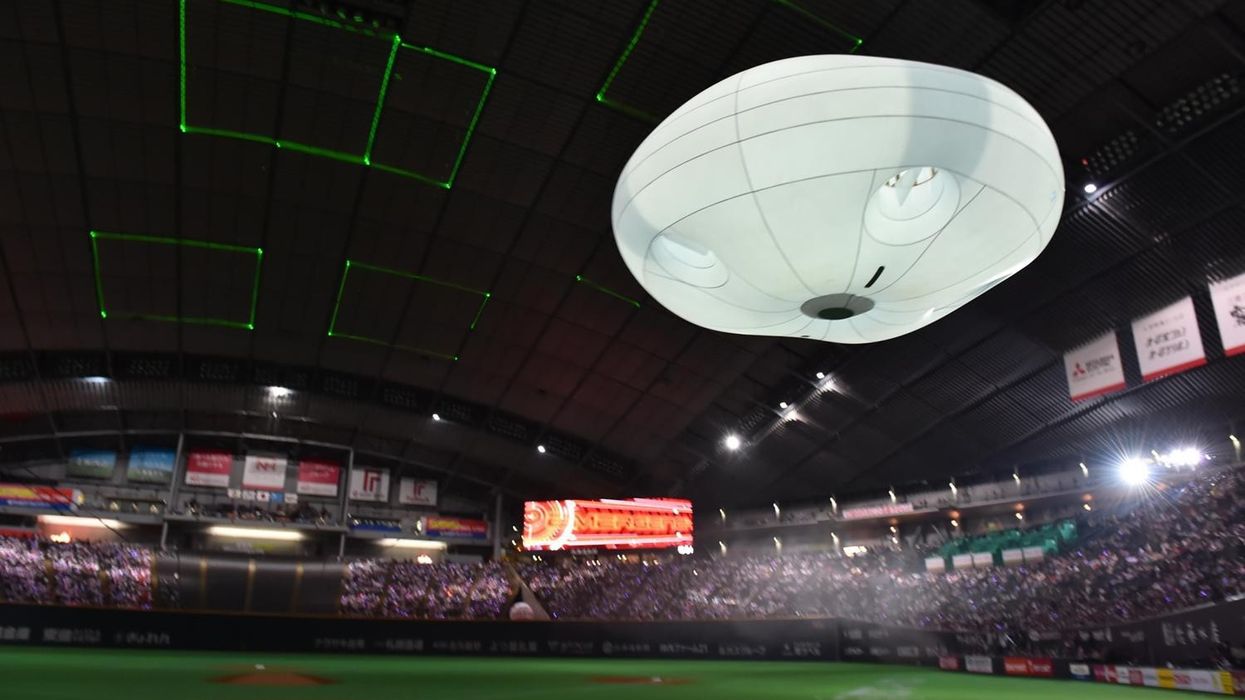Is a Drone-Balloon Hybrid a Match Made in Heaven?
Panasonic's new balloon-drone hybrid prototype will give filmmakers more options in the sky.

Panasonic is working on a balloon-drone hybrid called ballooncam. Intended mainly for live event, concert and sports coverage, it has interesting applications for narrative film as well. Filmmakers have been using balloons for a while for lighting purposes, but Panasonic hopes that combining the buoyancy of a balloon with the lift and control of a drone to create an attractive platform not just for lighting but also cameras and projectors.
Why would you consider using such a thing?
1. Spinning rotors behind a big, soft cover
If you've ever searched for "drone accidents," you already know where this is going, but this video of Enrique Iglesias slicing his hand open on a drone should be enough to remind you that drones can hurt people:
Of course, balloons can too, but it's much less likely. If you are covering any sort of event with a large crowd, it's likely you (and your insurance) will be more comfortable with cameras rigged to a balloon drone (or a wire) than to an exposed drone with its blades out for all to see.
2. Less battery power
While you can't get the "swooping" shots you might get with a drone, if you need a static or slow moving shot, a balloon cam will likely deliver what you need with significantly less power drain, giving you longer time in air and greater flexibility.

3. Less noise
The spinning blades of a traditional drone make a noise that can potentially ruin not only your footage on a narrative film, but also be a serious annoyance for concertgoers at a live event who are there to hear the music. By enveloping the drone rotors in an enclosure, noise issues are minimized.
4. More controlled lighting
Light balloons as an overhead lighting tool have really taken off in the last 20 years, but are severely limited in use on any kind of windy day. By combining the benefits of a balloon with a controllable drone, an overhead light could be rigged that would sit still better in a gentle wind (though still needs to come down in strong wind), or could potentially float along above a walk and talk providing an ambient light. We've seen this done with a drone in the past, but the combination with a balloon should provide some real benefits.
With all that in mind, the two biggest drawbacks to the unit are size and speed. If you need a tight shot to squeeze down a hallway, or you need it to race down that hallway, before shooting out over the crowd, you'll need a traditional drone. But for a huge array of applications, especially when there is a crowd or actor underneath, this is going to be a useful tool. The ballooncam prototype is currently showcasing at expos, with no word from Panasonic yet about when it will be released to market.











